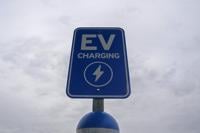HALIFAX - Nova Scotia's utility regulator has defied the provincial government and approved an average 14 per cent increase in electricity rates over two years.
Premier Tim Houston said last November that his government opposed the increase of 6.9 per cent in both 2023 and 2024, which had been agreed to by Nova Scotia Power and most customer representative groups.
However, the Nova Scotia Utility and Review Board said Thursday it will stick with most parts of the agreement, meaning the average residential customer who doesn't use electricity for home heating will see an average $10 increase on monthly bills. Customers who heat with electricity will see average increases in the range of $10 to $16.
There will be further rate hikes in January 2024.
"The board cannot simply disallow Nova Scotia Power's reasonable costs to make rates more affordable," says the decision.
"These principles ensure fair rates and the financial health of a utility so it can continue to invest in the system providing services to its customers."
The government passed legislation last fall that capped annual rate increases at 1.8 per cent — but that cap didn't include costs related to fuel or energy efficiency programs.
Tory Rushton, the minister of natural resources and renewables, told reporters Thursday that his government is disappointed by the decision, but it respects the board's independence and will review the document before deciding on any action.
"Everybody understands that Nova Scotians are faced with a huge affordability crisis .... I think it's a number that is unaffordable for most Nova Scotians," he said.
However, he argued the legislation passed last year helped keep rates down, pointing to a line in the board's decision that states, "rate increases in respect of non-fuel items are nearly half of what they were proposed to be before Bill 212."
The 203-page decision notes the utility hasn't seen a rate increase for non-fuel costs between 2014 and 2022, while inflation has driven up costs by about 20 per cent.
It also cites federal and provincial environment provisions requiring Nova Scotia Power — a subsidiary of Emera Inc. — to retire coal assets and invest in infrastructure to meet a goal of having 80 per cent of its generation coming from renewable energy by 2030 and net-zero greenhouse gas emissions by 2050.
The decision attributes the 2023 rate increase to a mix of rising costs, but in 2024 about 95 per cent of the 6.9 per cent rate hike is to cover projected increases in fuel costs.
Still, rates could potentially rise more after the "fuel adjustment mechanism" is used to determine what the province's mix of hydroelectricity, coal, renewables and natural gas actually ends up costing — and how those costs may be deferred to future years.
Meanwhile, there are other costs looming for Nova Scotia's ratepayers that could mean further rate hikes in the future.
The board approved "in principle" the establishment of the decarbonization deferral account, "to address the retirement of coal plants and related decommissioning costs," which are part of the utility's drive to move away from coal. It said the creation of the account would be subject to "a further consultative process."
These deferred costs would be in the hundreds of millions of dollars and would be spread over many years, similar to a mortgage.
The board has also set up a special system — referred to as a "storm rider" — for a three-year trial, allowing the utility to receive rate increases to compensate for extreme weather costs.
The storm rider will start adding to power bills if storm costs exceed $10.4 million annually. Some climate scientists have projected that warmer water temperatures in the northwestern Atlantic are likely to intensify hurricanes that hit the province, posing rising danger to the electricity grid.
Tynette Deveaux, a spokeswoman for the environmental group Sierra Club, said the board's decision paints a discouraging portrait of Nova Scotia's delayed shift toward renewable energy and the utility's failure to build a more resilient system.
"Nova Scotians are stuck with high-cost electricity from fossil fuels, an electricity grid that goes down even in the smallest storms, and a shorter time frame to meet the province’s 2030 legislated target to phase out coal-fired power plants," she said in a news release.
This report by Ďă¸ŰÁůşĎ˛ĘąŇĹĆ×ĘÁĎ was first published Feb. 2, 2023.








































